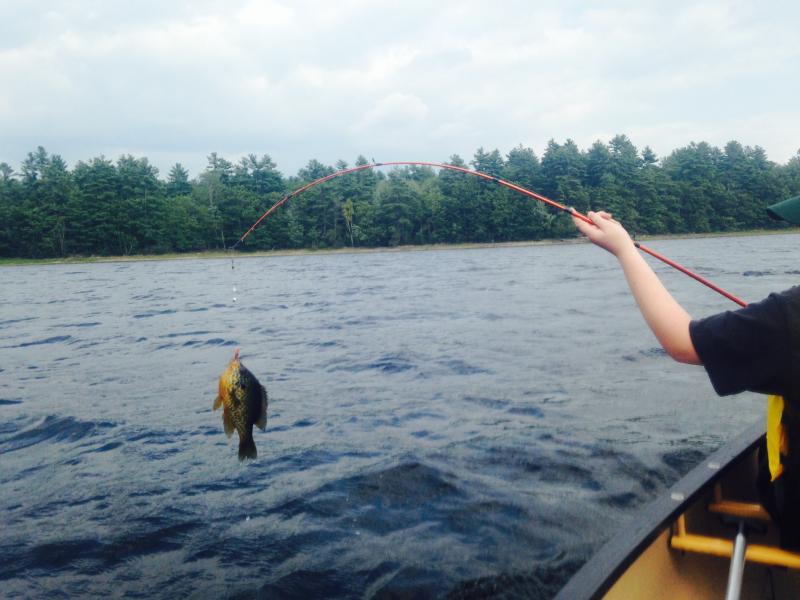It was our last day of summer vacation, and a day of surprises and mysteries. It started with a fishing excursion to Clary Lake with our son, for whom fishing became a major interest over the summer. Out on the lake, in our favorite spot, our son felt a strong tug on his line. As he pulled it into the canoe, we saw a huge, blue-yellow-and-red fish that, after checking our field guide, we discovered was a pumpkinseed sunfish — so big that as he reeled it in, we thought it must be a bass. After a few photos, we released the fish and chatted about our surprise fish. Who knew they could get that large!
Later that evening, we toasted marshmallows around a campfire in Winthrop, listening to crickets, frogs, and other sounds of the night. At one point, we heard a mysterious sound floating out from the nearby woods — a sort of descending series of hoots. It reminded us vaguely of the sound of a common potoo, a peculiar relative of the whip-poor-will that lives in Central and South America. Clearly the sound could not be a potoo. But what was it?
We are fortunate in knowing most of the sounds of the birds of northeastern North America, even those that are heard mainly at night. And we know a great many of the variety of sounds of our native mammals and insects as well. So when we hear a sound that we can’t identify, it’s a fun challenge and interesting mystery for us. It also reminds us of what people who are not well versed in the sounds of nature are missing. Far fewer know the sounds of the night. Dare we say that many, perhaps even most, people walk through life without an awareness of the full range of sounds that fill our ears each day, some natural, some not.
When we take a group of beginning birders out for a bird walk, one of the things we like to do is to take a minute or two to engage in something we call “deep listening.” We ask the group to be silent for a short period of time and invite them to try to pick up on every sound that reaches their ears, even if they have no idea what the sound is. Afterwards, we ask people how many different bird sounds or natural sounds that they heard and to describe some of them. Even for an experienced naturalist, this can really sharpen the senses!
Along with natural sounds, such concentrated attention to the acoustic environment that surrounds us often makes us aware of some of the far-off sounds of things like trucks on highways, cars on bridges, or motorized boats on the water. These sounds, along with distant barking dogs, can occasionally fool the ears into thinking one is hearing a very distant owl, or something else. We wondered if our mystery sound could have been a distant modern sound, fooling us, but then again.
Today’s handy technology allows just about anyone to quickly pull out a digital camera, mobile phone, tablet, or laptop computer and make a pretty good recording of a mystery sound. Later, that recording can be compared to the wealth of sound recordings available online, or the recording can be shared with experts. We often have people who send us sound recordings for identification via email or Facebook. Most we can identify; occasionally, one remains a mystery.
So far, the sound from our last campfire of summer remains a mystery ... but we do have a faint recording and you can bet we will keep trying to figure it out!





























.png)
.png)

